Conus omaria Hwass in Bruguière, 1792
Omaria cone, 81mm
Conus
omaria is moderately common on lagoon interisland reefs and pinnacles.
On many reefs, it is found under rocks in the daytime and emerges at night to
feed on mollusks. But they seem most common in lagoon Halimeda patches,
where they may be active during the day as well. It is similar to a number of
other tented cones, but is most often confused with Conus
episcopatus, from which it differs by its typically more cylindrical
body shape and the shape of its spire. Usually, the widest part of Conus
episcopatus is right up at the shoulder of the spire, while on C. omaria,
it is a bit anterior of the spire. The pattern of the tents and brown markings
also differ between the two species, but that takes developing an eye to discern
the differences.
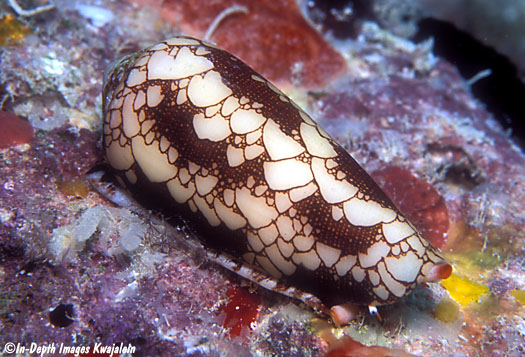
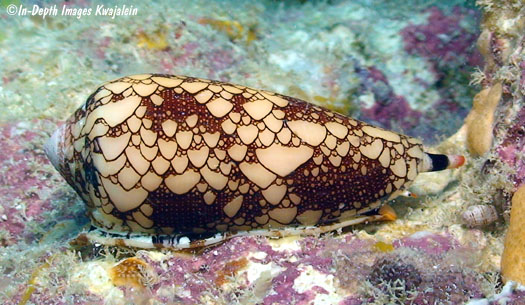
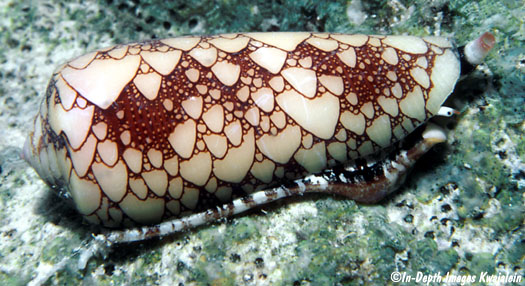
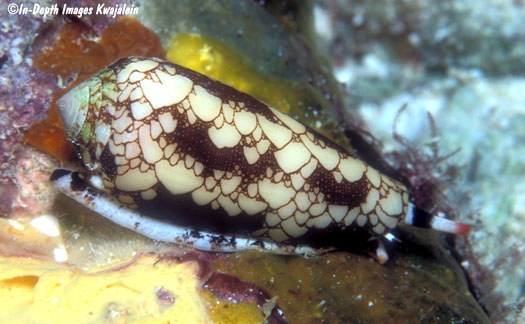
Here are a couple with their egg
capsules.
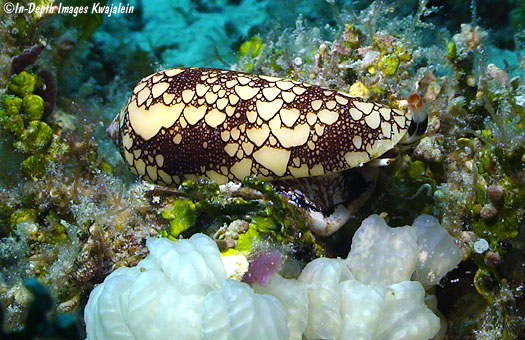
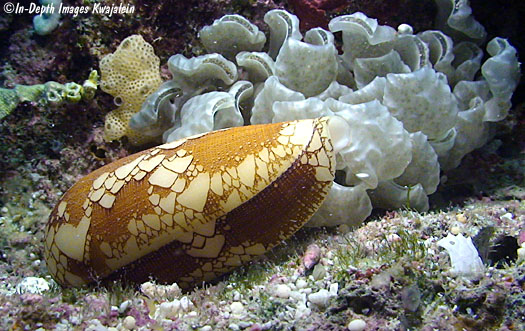
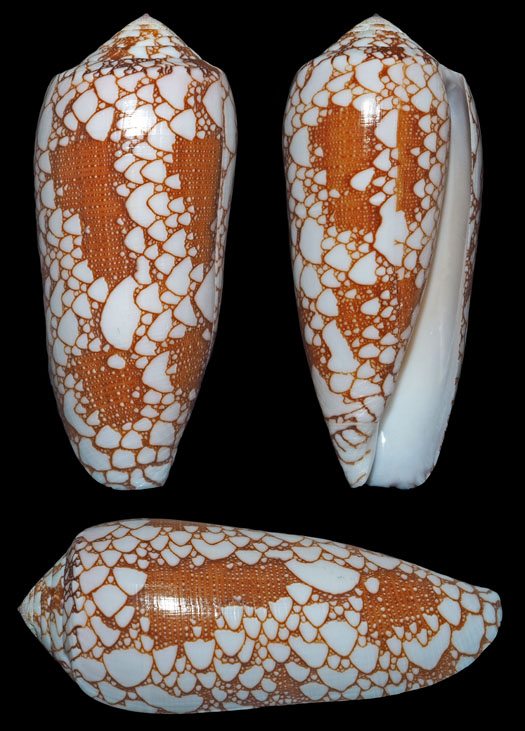
An 81mm specimen, by far the largest
we have seen, had an odd color pattern and is figured below. The shell was found
empty by Don Anson.
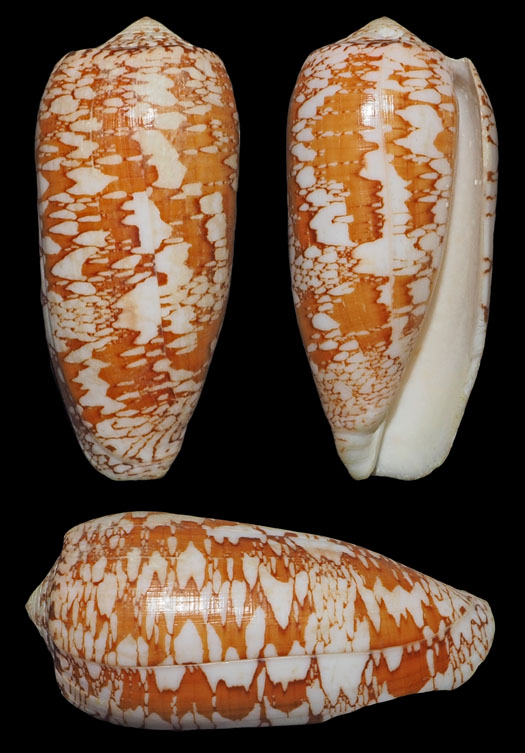
Created
4 July 2009
Updated 12 March 2020
Return to cones
Kwajalein Underwater home








